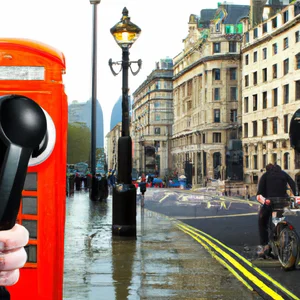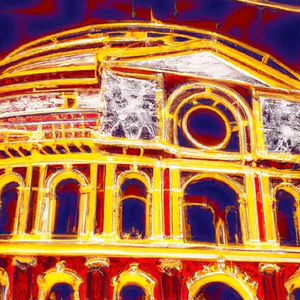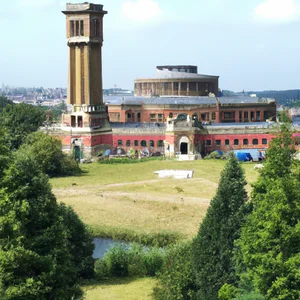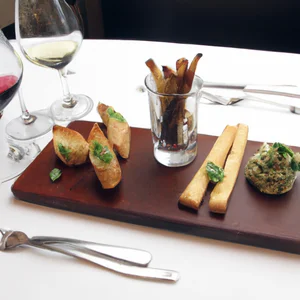Book your experience
Visit London without rain
If you are thinking of making a trip to London, here is some advice I give you: try to avoid the rain and the cold, otherwise you risk finding yourself wandering under a downpour with an umbrella which, needless to say, tips over at the first blow of wind.
So, to avoid ending up soaked like a boiled chicken, the best time to visit the English capital is undoubtedly spring, like from April to June. During that time, the weather is more clement, with temperatures that don’t make your teeth chatter and flowers that bloom everywhere. It’s like London putting on a new dress, you know?
And then, let’s not forget summer! Sure, it’s hot, but not as hot as in Rome, for example. Maybe your nose burns a little, but it’s better than being wrapped in a blanket, right? I remember once, in August, having a picnic in Hyde Park and the sun was so beautiful that I didn’t want to go home. But be careful, because in summer it is not uncommon for a nice storm to appear. So, always keep an eye open to the weather, eh!
In autumn, the leaves changing color give a truly magical look to the city, but, as you can imagine, the rain also begins to appear. And in the winter, well, temperatures can drop quite a bit. Unless you’re a cold-weather fanatic, this might not be ideal.
In short, if you want to enjoy London without getting wet like a rat, try to plan your trip in spring. And, if you go, don’t forget to bring a good pair of shoes, because in London there is a lot of walking and, believe me, there is nothing worse than finding your feet wet. Maybe one day I’ll go there again and we’ll have a nice walk together!
The best seasons to visit London
An unforgettable memory
I still remember the first time I set foot in London, one afternoon in September. The sun shone high in the sky, and the leaves of the trees in Hyde Park were tinged with shades of gold. It was a perfect day for walking, and I found myself sipping tea in an outdoor café, surrounded by other travelers and Londoners, all happy to enjoy that moment of beauty. That experience taught me that to truly appreciate the magic of London, it is essential to choose the right season.
Seasons to watch
London is famous for its variable climate, but the best seasons to visit are undoubtedly spring (March-May) and autumn (September-November). During spring, the gardens bloom in an explosion of colour, and the climate is generally mild, with temperatures ranging between 10 and 18 degrees Celsius. Events like the Chelsea Flower Show attract visitors from far and wide, making the city a stage for flowers and culture.
Autumn, on the other hand, offers an enchanting atmosphere, with the leaves turning red and gold. The temperatures are similar to spring, but the crowds are less pressing, allowing you to explore iconic places such as the British Museum or Borough Market with greater tranquility.
An insider tip
A little-known tip: if you want to avoid the rain and enjoy clear skies, pay attention to the Notting Hill Festival, which takes place on the last weekend of August. While it’s still technically summer, the celebration of culture and music is a great indicator of a period of good weather, with the possibility of extending your visit into early September.
A climate that shapes culture
The London climate has historically influenced not only architecture, but also local culture. The famous “pub cultures” and welcoming cafes were born precisely to offer refuge from the cold and rain. This tradition of socializing indoors has given rise to a vibrant dining and entertainment scene, which is an integral part of London life.
Sustainability in travel
When planning your visit, consider sustainable tourism practices: choose to travel by public transport, such as the subway or buses, and take part in walking or cycling tours. These options not only reduce your environmental impact, but also allow you to explore London in a more authentic way.
Immersion in the city
Imagine walking along the Thames on a cool spring day, with seagulls flying overhead and the scent of flowers wafting in the air. Don’t miss the opportunity to visit Kew Gardens, a perfect place where nature and history intertwine, offering spectacular views and an unforgettable experience.
Final reflections
Many believe that visiting London inevitably means dealing with rain and cold, but with the right planning, you can enjoy a vibrant and welcoming city. What season inspires you most to discover this fascinating metropolis?
Local events: a way to avoid the rain
When I first visited London, I clearly remember my surprise at witnessing a street food event in Borough Market, where the scent of fresh food mixed with the humid air of a typical London day. Despite the gray clouds, the vibrant atmosphere and laughter of the visitors made the bad weather a distant memory. This is the power of local events which, as well as offering a refuge from the rain, offer an authentic taste of London culture.
Practical information
London is a city that never stands still, and hosts a myriad of events throughout the year that can elevate your travel experience. From Museum Night in May to Notting Hill Carnival in August, there’s always something going on. To stay updated on local events, I recommend visiting sites like Time Out London or the official portal of the City of London, where you will find a complete overview of ongoing events, even last minute ones.
A little-known tip
Insider trick: Many local events, such as Christmas markets or summer fairs, offer free entry and are less crowded on weekdays. So, if you want to enjoy a quieter atmosphere, plan your visit on a weekday. Not only will you avoid the crowds, but you will also have more opportunities to interact with vendors and locals.
Cultural impact
The tradition of organizing local events is an integral part of London culture. These events not only serve to entertain, but also celebrate the city’s diversity. London is a melting pot of cultures, and events offer a unique opportunity to savor cuisine, music and art from every corner of the world. Participating in these celebrations is a way to connect with the city and its inhabitants.
Sustainability and responsibility
In an age where sustainability is key, many local events in London are committed to reducing their environmental impact. For example, many food markets promote the use of local and seasonal ingredients, thus reducing their carbon footprint. Choosing to participate in these events not only enriches your experience, but also supports the city’s sustainable practices.
Immersion in the atmosphere
Imagine walking among the stalls of a local market, the sound of laughter and live music filling the air, while the scent of delicious dishes envelops you. The rain may fall, but the energy and liveliness of local events will make you forget the bad weather. These experiences are the beating heart of London life and an opportunity to fully immerse yourself in the city’s culture.
Activities to try
If you are looking for a unique experience, don’t miss the opportunity to participate in Pride in London, which takes place every summer. This event not only celebrates the LGBTQ+ community, but also offers a series of side events, such as concerts and markets, where you can discover local craftsmanship and enjoy culinary delights.
Myths to dispel
A common misconception is that outdoor events in London are always ruined by rain. In reality, Londoners are used to variable weather conditions and many events continue unless there are extreme weather conditions. So, don’t let a little rain stop you; Get ready with an umbrella and enjoy the lively atmosphere!
Final reflection
Next time you plan your trip to London, remember that local events are not just a way to avoid the rain, but a gateway to the true essence of the city. What local event would you like to explore during your visit?
Discover London on a sunny weekend
A personal experience to remember
I still remember my first weekend in London, when the skies opened and let in a warm, bright sun. It was the month of May and I was lucky enough to find myself in Camden Market, surrounded by bright colors and delicious smells of street food. While walking along the banks of the Regent’s Canal, I realized that London knows how to surprise, even when the weather forecast seems adverse. With an unpredictable climate, a sunny weekend in the British capital becomes an unmissable opportunity to explore hidden corners and enjoy unique experiences.
Practical information for an unforgettable weekend
In warm weather, London offers a range of activities that seem tailor-made to be enjoyed outdoors. The months of May to September are ideal, with longer days and a temperate climate. Don’t forget to check out local events, like summer festivals in the parks, which offer live music, food, and entertainment for all ages. Sources such as Visit London provide an up-to-date calendar of events, while individual park websites, such as Hyde Park and Regent’s Park, offer details on concerts and outdoor activities.
Unconventional advice
If you are looking for an experience that few tourists know about, I recommend exploring London’s pub terraces. Many of these historic venues, like The Rooftop St. James, offer great city views and a selection of local craft beers. Here you can sit, enjoy a drink and simply observe the world around you, all immersed in a welcoming and relaxed atmosphere.
Cultural impact of a sunny weekend
London culture is intrinsically linked to its climate. People love to take advantage of the beautiful days to gather in the parks, where picnics, games and concerts take place. This outdoor lifestyle reflects the resilience of Londoners, who know how to make the most of their moments of sunshine. It’s not uncommon to see groups of friends enjoying a barbecue in Greenwich Park or families planning days out by the River Thames.
Sustainability and responsible tourism
When exploring London on a sunny weekend, consider sustainable tourism practices. Opt for public transport such as the bus or bike, rather than the car, to reduce your environmental impact. Many neighborhoods, such as Shoreditch and Notting Hill, are easily walkable, allowing you to discover independent shops and local markets without contributing to pollution.
An activity not to be missed
If the sun is shining, you can’t miss a stroll along the South Bank, where street artists, food trucks and craft markets create a lively atmosphere. Stop by Borough Market to sample some of the city’s best food, from artisanal cheeses to signature desserts.
Myths and misconceptions
A common misconception is that London is always gray and rainy. In reality, sunny days can be just as frequent and offer a completely different experience of the city. Making the most of the good weather is essential to enjoying the vibrancy of London.
A final reflection
Every time the sun shines on London, the city transforms into a magical place, where the streets fill with life and energy. Next time you plan a trip, consider visiting London on a sunny weekend: the atmosphere created is unique. Have you ever wondered what it would be like to discover London without an umbrella?
Historical curiosities: London climate and culture
An unexpected encounter
I still remember my first trip to London, when, one rainy afternoon, I decided to take refuge in a historic pub in the Soho district. As I sipped a pint of ale, I listened to an older gentleman tell stories of London and its unpredictable weather. He struck me as, despite the gray clouds, the inhabitants of London had developed an incredible resilience and a deep connection with their city, transforming every rain into an opportunity to socialize and discover new corners. London is a city that feeds on its history and, in a certain sense, also on its climate.
The climate: a travel companion
London is famous for its variable climate, which has played a crucial role in the formation of local culture and traditions. Londoners know that, in every season, the sun and rain dance together, influencing lifestyles and daily activities. According to the Met Office, London averages around 164 days of rain a year, meaning it’s not uncommon to find yourself dealing with a downpour even during the summer months. This shouldn’t scare visitors, but rather encourage them to explore new experiences, such as walking in parks or visiting museums.
An insider tip
A little-known tip is to take advantage of the “London Wetlands”, a unique ecosystem located just a short walk from the city centre. Here, not only can you enjoy a wonderful green area, but you also have the chance to spot several species of migratory birds. This corner of nature is a great example of how London is trying to preserve its environment, an initiative that reflects the city’s commitment to sustainable practices.
The cultural impact
The influence of climate on London culture is also evident in art and literature. Many authors, from Charles Dickens to Virginia Woolf, have used the rain and gray skies as a backdrop for their narratives, making London a perfect stage for stories of passion, loneliness and hope. Rain becomes a symbol of romance and melancholy, while long winters create an atmosphere that invites reflection.
Experience London sustainably
In an age where responsible tourism is key, it’s interesting to see how many local events and outdoor markets are designed to encourage sustainable practices. Attending a farmers market, for example, not only allows you to enjoy fresh, local ingredients, but also supports the community’s economy and reduces environmental impact.
Immerse yourself in the atmosphere
Imagine walking along the Thames, as the clouds clear and a ray of sunshine illuminates the historic monuments. The sight of the Tower of London reflected in the waters of the river is an experience that will remain etched in your memory. Don’t forget to bring an umbrella with you, because in this city, the rain could always surprise us.
An invitation to reflection
Next time you think about London’s weather, instead of seeing it as an obstacle, try seeing it as an opportunity to explore a part of the culture that many tourists overlook. How does climate affect your perception of a city? London, with its mix of rain and sun, could offer you a unique and fascinating insight into urban life.
Unconventional tips for dealing with bad weather in London
When I found myself at London during one of its famous rainy days, I discovered that the city has a unique way of turning gray into colour. While many tourists take refuge in cafes, I decided to embrace the rain and explore some of the most fascinating places that only bad weather can reveal. From that day, I understood that London offers extraordinary experiences even under overcast skies.
Discover the charm of museums
A practical way to deal with bad weather is to visit its museums, many of which are free. The National Gallery, for example, not only offers an extraordinary collection of works of art, but its welcoming environment allows you to escape and immerse yourself in British culture. An unconventional tip is to join one of the free guided tours that are often held, where local experts reveal intriguing stories behind the masterpieces on display.
The culture of rain
Rain has shaped London culture in surprising ways. People are used to carrying an umbrella and enjoying small breaks in the sun, creating an atmosphere of resilience and adaptation. Bad weather never stops social events and activities, on the contrary, it often enriches them. Interestingly, many of the music and art festivals take place outdoors, and people come together in a collective experience, celebrating life despite the weather.
Sustainability in tourism
When traveling to London, it is vital to consider sustainable tourism practices. Choosing to visit attractions indoors not only protects you from the rain, but also reduces your carbon footprint, as these facilities often use renewable energy systems. Consider using public transport, such as the famous Tube, to reach the different museums and galleries, thus contributing to responsible tourism.
Unmissable activities in the rain
If bad weather surprises you, don’t miss the opportunity to visit Borough Market, where you can enjoy local delicacies while sheltering under tents. This market is a true gastronomic paradise and the vendors are always ready to share stories about their products, making the experience even more engaging.
A common myth is that London is always gray and rainy, but in reality, sunny days are frequent and often unexpected. So when planning your trip, don’t let the weather forecast discourage you.
A final reflection
Next time you find yourself in London, ask yourself: How could a rainy day turn into an opportunity to discover the true essence of the city? Perhaps, instead of trying to avoid bad weather, you could discover a side of London that most tourists lose. The beauty of this metropolis lies precisely in its ability to adapt and surprise, even when the clouds gather.
Sustainability: how to travel responsibly in London
A Personal Experience
On a recent trip to London, I found myself strolling the streets of Shoreditch, a vibrant neighborhood known for its street art and eco-friendly cafes. While sipping a delicious organic coffee from a small family-run café, I noticed a group of tourists excitedly taking photos of the murals. I asked myself: how many of these experiences could have been amplified if everyone had considered the impact of their actions on the environment?
Practical Information
Traveling to London responsibly is more than just a choice; it is a way to contribute to a sustainable future. According to the London Sustainable Development Commission, the English capital has implemented various initiatives to reduce the environmental impact of tourism, encouraging the use of public transport and promoting the adoption of eco-compatible practices in the hospitality and of catering.
Here are some practical tips:
- Transport: Use the public transport network, such as the Tube and buses, which are among the most efficient in the world. Also consider renting a bike through Santander Cycles, also known as “Boris Bikes”.
- Accommodation: Choose properties that have obtained sustainability certifications, such as the Green Key or EarthCheck brand.
- Food: Experience local cuisine by opting for restaurants that use locally sourced and seasonal ingredients.
An Unconventional Advice
A little-known option for travelers is “Litter Picking”, an activity where tourists can join local volunteers to clean up London’s parks or beaches. This experience not only offers a way to actively contribute to the environment, but also allows you to meet residents and discover hidden corners of the city.
Cultural and Historical Impact
London has a long history of innovation and commitment to sustainability, dating back to the Victorian era, when the first pollution control laws were introduced. Today, the city continues to fight for a greener future, with events such as London Climate Action Week bringing together activists, entrepreneurs and citizens to tackle climate challenges.
Sustainable Tourism Practices
Adopting responsible tourism practices is not just a personal choice, but a way to preserve London’s cultural and natural heritage. Small actions, like carrying a reusable water bottle to reduce plastic use or choosing activities that support the local economy, can make a big difference.
Immerse yourself in the Atmosphere
Imagine walking along the Thames, with the smell of freshly baked bread coming from a local market. The chatter of residents mixes with the sound of the waves as the sun sets behind Tower Bridge. Sustainability and beauty can go hand in hand, making every experience in London not only memorable, but also meaningful.
Recommended Activities
For an unforgettable experience, join a sustainable food tour that takes you through Borough and Camden markets, where you can sample local produce and discover fascinating stories behind the vendors.
Myths to dispel
A common myth is that traveling sustainably is expensive or complicated. In fact, many eco-friendly options, such as public transport and local markets, are not only accessible but also rich in authenticity and culture.
Final reflection
In a world where tourism can have a significant impact on the environment, how can we, as travellers, make a difference? If each of us took just one small sustainable action, we could help preserve the beauty of London for future generations. What do you think?
The rainiest months: how to plan
I still remember my first trip to London, when, armed with a poor quality umbrella, I found myself walking along the Thames in an incessant rain. I was convinced that I had chosen the wrong time to visit the British capital, but in reality I discovered that the rain is part of the charm of London. If you plan your trip between October and March, you have a good chance of encountering gray and rainy days. However, with proper preparation, you can turn even the gloomiest days into a memorable adventure.
Practical and up-to-date information
According to the Met Office, London receives on average around 600mm of rain a year, with January and October competing for the title of wettest months. Don’t let the weather forecast ruin your plans; Always check local apps like BBC Weather for real-time updates. Also, consider that rains in London tend to be light and short, so it’s possible that after a downpour the sun will shine again.
Unconventional advice
Here’s an insider tip: bring a waterproof scarf with you. Not only will it protect you from the rain, but it can also be used to protect you from the wind or as a temporary cover for your backpack. This versatile accessory is often underestimated by tourists, but it can make a difference in a variable climate like London’s.
Cultural and historical impact
Rain has shaped London culture in unexpected ways. Artists and writers, from Charles Dickens to Virginia Woolf, have captured the essence of a city steeped in humidity and mystery. The rainy atmospheres have inspired stories that reflect the resilience of Londoners, capable of embracing even the grayest days with a cup of hot tea in hand.
Sustainability and responsible tourism
When planning your rainy days, consider sustainable modes of transportation. Take advantage of London’s public transport system, such as the Tube or buses, which are efficient and reduce the environmental impact compared to using taxis. Additionally, choose to visit attractions that promote eco-friendly practices.
Get lost in the atmosphere
Imagine walking the streets of Notting Hill in a light drizzle, as the cafe lights reflect on the wet pavements. The drops slide gently on the leaves of the trees, creating a harmony of sounds that only London can offer. There’s nothing more fascinating than exploring covered markets, such as Borough Market, where you can savor culinary delights without worrying about the weather.
Activities to try
If the rain surprises you, don’t miss the opportunity to visit the British Museum. Not only is it a perfect refuge from the elements, but it also offers one of the most comprehensive collections of art and history in the world. Entry is free, allowing you to spend hours exploring at no cost.
Myths to dispel
A common misconception is that London is always gray and rainy. In fact, the city also thrives on splendid sunny days, especially in summer. Rain is just part of the London experience, it doesn’t define it.
Final reflection
Remember that every drop of rain can be seen as an opportunity to discover a different London. What is your experience with bad weather while traveling? Have you ever found beauty on a rainy day?
Unmissable attractions for rainy days
I still remember my first trip to London, when the inexorable British rain seemed to want to ruin all my intentions of exploration. But, fortunately, I did not let myself be discouraged. Indeed, I discovered that London has a vibrant soul even under the gray clouds, and there are many attractions that shine indoors, ready to reveal their charm even on the rainiest days.
Museums and art galleries
Let’s start with the museums. London is a true cultural mecca, and many of its most famous museums are free. The National Gallery, for example, not only houses priceless works of art, but also offers breathtaking architecture that deserves to be admired. If you are an art enthusiast, don’t miss the Tate Modern: a former power station that has been transformed into a temple of contemporary art. Here you can walk among installations that challenge your perception, all while the rain outside beats against the large windows.
Covered markets
Another way to enjoy London in the rain is to visit the covered markets. Borough Market, one of the oldest and most fascinating food markets in the city, offers a wide choice of local and international food. While enjoying a bowl of hot ramen or a homemade dessert, you can take refuge under the glass roofs, letting yourself be enveloped by the lively atmosphere. And if you’re lucky, you might even come across a local producer offering free tastings!
Theaters and live shows
No trip to London would be complete without an evening at the theatre. The West End is world famous for its shows, and rainy days are perfect for enjoying a musical or comedy. Booking tickets for a show can prove to be an excellent idea even for the most humid evenings: the atmosphere inside the theaters is always warm and welcoming, and the stories that come to life on stage can transport you away from the rain pouring down outside.
Unconventional advice
Here’s a little-known tip: don’t underestimate the power of London’s libraries! The British Library is an extraordinary place where you can explore incredible collections, from medieval manuscripts to historical documents. Not only will you have the chance to immerse yourself in history, but you will also find quiet corners where you can retreat and read a good book while observing passers-by through the large windows.
The cultural impact of rain
Rain has always influenced London culture. Many artists and writers, such as the poet T.S. Eliot or the painter Turner, found inspiration in the humid atmosphere and gray clouds. This climatic peculiarity has given rise to a unique narrative that is reflected in literature, art and music. So rather than seeing it as an obstacle, embrace the rain as an integral part of the London experience!
Sustainability and responsible tourism
When exploring London, consider using public transport, such as the tube or buses, to reduce your carbon footprint. Additionally, many museums and galleries follow sustainable practices, such as using recycled materials and adopting policies to reduce waste.
In conclusion, London in the rain has a charm all its own. What’s your must-see attraction when the weather isn’t cooperating? Let yourself be inspired by this city which, even on the grayest days, knows how to surprise and enchant.
Taste the real London: markets and food tours
When I think of London, the memory of a rainy winter Sunday emerges immediately. I was in Borough Market, a place that, despite the drops of water falling from the gray sky, pulsated with life and flavour. The air was filled with delicious aromas: the scent of freshly baked bread, exotic spices and street food from every corner of the world. The rain, rather than ruining the atmosphere, seemed to nourish it, making the experience even more authentic.
An unforgettable culinary experience
London’s markets are a fantastic way to immerse yourself in local culture, and there’s no better place to start than Borough Market. This historic market, open since 1014, is not just a place to buy fresh produce, but a true paradise for foodies. Here you can find everything, from artisanal cheeses to international specialties. Don’t forget to try a delicious pulled pork sandwich or a portion of paella, while the vendors tell you the story of their ingredients.
Insider tip
An insider tip? Try to visit the market during the week if possible. Saturdays are very crowded and you might feel a little overwhelmed. During weekdays, you’ll have the opportunity to chat with vendors, discover their stories, and maybe even enjoy some free samples!
The cultural impact of food in London
London’s culinary culture is a reflection of its history and diversity. The immigrants who settled in the British capital brought their gastronomic traditions with them, helping to create a vibrant and diverse culinary scene. Markets, therefore, are not just places of commerce, but true centers of cultural interaction, where people meet, share and celebrate their heritage.
Sustainability and responsible tourism
In an era where sustainability is key, many London markets are adopting responsible practices. For example, Borough Market promotes local and organic produce, encouraging visitors to choose options that support local farmers and producers. This not only reduces environmental impact, but also helps keep the region’s culinary traditions alive.
An idea for your visit
If you’re up for a more structured experience, consider taking a food tour. There are many available, which will take you around the local markets and restaurants, letting you taste typical dishes and discover fascinating stories behind each dish. It’s a great way to get to know London through its food.
Myths to dispel
A common misconception is that London is all about fast food and chain restaurants. In fact, the city is a mecca for foodies, and the markets are the ideal place to enjoy authentic, passionately prepared delights.
Ultimately, London is a place where food tells stories and brings people together. Whether you are a cooking enthusiast or simply curious, I invite you to get lost among the stalls of a market and let yourself be surprised by the flavors that this city has to offer. And you, which dish are you looking forward to tasting in the British capital?
The magic of London: outdoor activities in spring
An unforgettable memory
I still remember my first visit to London in spring: the scent of flowers blooming in the parks, the singing of birds filling the air, and the sight of people enjoying a picnic on the green grass of Hyde Park. That season not only awakens the city after a long winter, but transforms London into a vibrant stage of color and sound. Every corner seems to tell a story, and the outdoor spaces become the beating heart of city life.
Spring: the perfect time to explore
If you are planning a trip to London, spring is undoubtedly one of the best seasons to visit. Between March and May, temperatures rise and outdoor events begin to flourish. The famous Kew Gardens is a must for nature lovers, while the Camden Market comes alive with food stands and street artists. Furthermore, during the month of May, the city hosts the Chelsea Flower Show, an unmissable event for those who love gardening and floral design.
An insider tip
Here’s a little-known tip: try to visit private gardens in London, like those at Leighton House Museum or Hampstead Heath. These hidden jewels offer incredible views of the city and rare tranquility. Often, during the spring, guided tours are organized that will allow you to discover secret corners and fascinating stories linked to these places.
A unique cultural heritage
Spring has profound historical and cultural importance for London. During the Victorian period, gardens and parks became gathering places for the upper classes, symbolizing social change and the desire to reconnect with nature. Today, London continues to celebrate this tradition, making its parks a haven for everyone from tourists to residents.
Sustainability in beauty
When exploring London in spring, consider adopting responsible tourism practices. Use public transport to travel between parks and markets, and attend events that promote sustainability, such as London Green Fair. These initiatives not only support the local community, but also help preserve the city’s beauty for future generations.
An experience not to be missed
Don’t miss the opportunity to participate in a picnic in the park. Bring along a blanket and some treats from one of the city’s many food markets, like Borough Market. Sit on the grass and enjoy the moment, watching life go by around you. It’s a simple experience, but one that will make you feel part of London’s vibrant culture.
Myths to dispel
A common misconception is that London is always rainy. Although rain may appear, sunny days in spring are very common. In fact, many Londoners say that spring is the most beautiful time to discover the city, with blue skies providing a backdrop to flowering gardens.
A final reflection
In conclusion, spring in London is a magical time that deserves to be experienced. I invite you to reflect: what is your favorite outdoor activity? Whether it’s a picnic in the park, a walk among the flowers or an exploration of the local markets, London in spring offers amazing opportunities to connect with the city and its vibrant culture. Be inspired by the beauty of this season and discover all that London has to offer!

 Architecture and Design
Architecture and Design Cities and Regions
Cities and Regions Culture and History
Culture and History Events and Festivals
Events and Festivals Fashion and Shopping
Fashion and Shopping Food and Wine
Food and Wine Nature and Adventure
Nature and Adventure Unique Experiences
Unique Experiences



























